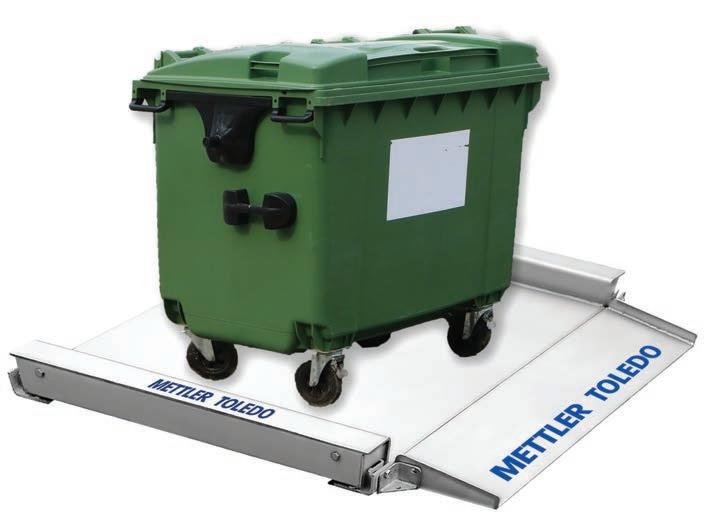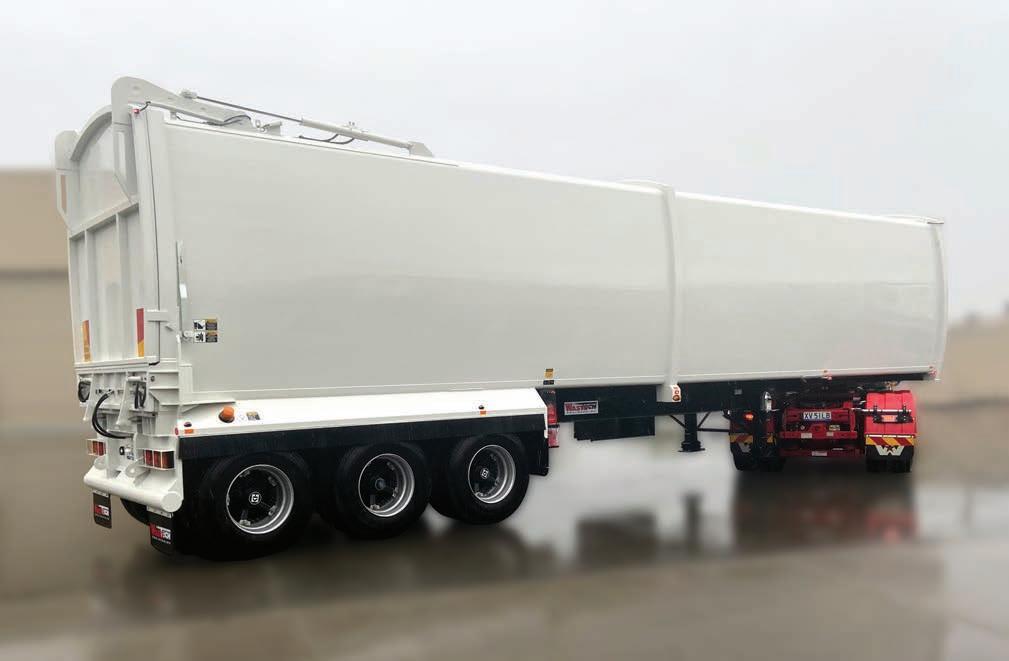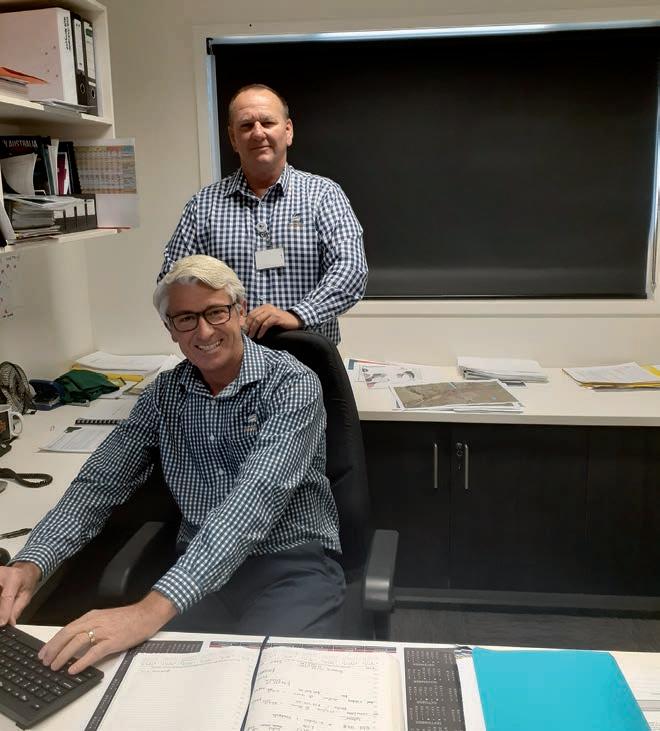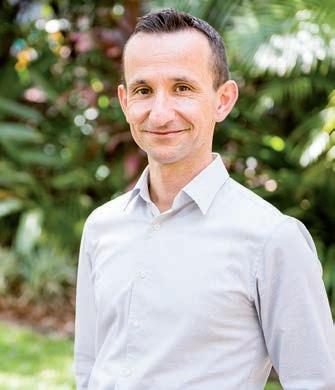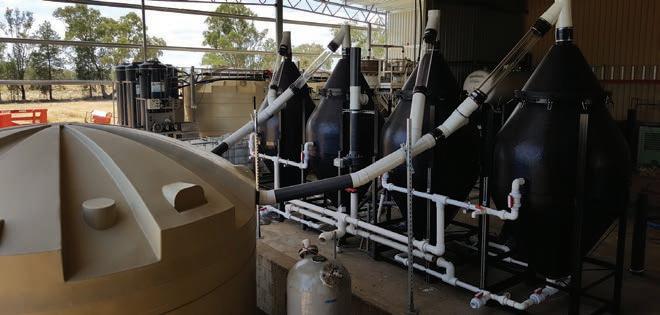
8 minute read
UNLOCKING THE VALUE IN WASTE
Unlocking the value of waste
WASTE MANAGEMENT REVIEW EXPLORES THE APPETITE, BARRIERS AND OPPORTUNITIES FOR BOOSTING THE USE OF RECYCLED CONTENT MATERIAL IN INFRASTRUCTURE AND CIVIL WORKS PROJECTS.
In mid-September, the NSW Government released new guidelines to boost the use of asphalt containing recycled crushed glass in infrastructure projects across the state. Specifications were amended to allow up to 10 per cent recycled crushed glass in asphalt base course, up from 2.5 per cent.
According to Andrew Constance, NSW Transport and Roads Minister, the guidelines will help industry navigate the steps for establishing and operating glass-recycling facilities, and processing glass to the standard required for use by Transport for NSW.
“Transport for NSW has already incorporated the use of recycled crushed glass on a number of its construction and maintenance projects and has the potential to use up to 45,000 tonnes in the next three financial years, which equates to 234 million glass bottles,” Constance says.
While 234 million glass bottles is impressive, the estimate appears somewhat conservative, with the Southern Regional Organisation of Councils (SSROC) alone aiming to recycle nearly 100 million glass containers per year into local roads.
Through the largest localgovernment-led procurement of recycled road-making materials in NSW history, SSROC’s Paving the Way initiate is expected to create a market for over 20,000 tonnes of glass each year – approximately one-third of participating council’s household glass recycling containers.
By signalling ongoing aggregated demand, SSROC aims to stimulate end markets for recycled glass, as well as support local jobs and the development of recycling infrastructure.
Transport for NSW’s specifications update and SSROC’s Paving the Way are just two of many new initiatives seeking boost the use of recycled content material in infrastructure and civil works projects across the country.
In August, for instance, the Victorian Government opened its $2.6 million Sustainable Infrastructure Fund grants program, which aims to increase the use of recycled materials in local infrastructure projects across the state.
Grants of up to $300,000 were made available to local councils to use recycled materials to build new infrastructure.
The program followed the launch of Sustainability Victoria’s Buy Recycled directory, which is designed to provide government buyers with easy access to suppliers and recycled material options when considering products for purchasing and infrastructure projects.
The Victorian Government’s Social Procurement Framework requires government buyers to consider opportunities to deliver social and sustainable outcomes in every procurement activity. Where appropriate, this includes sustainable material choices and buying products made from recycled content.
While these initiatives highlight a substantial economic and social shift, with governments and the wider community beginning to understand the latent value hidden in waste material, it should be noted that they build off years of research and development.
Tyre Stewardship Australia (TSA), for example, has been undertaking crumb rubber market development activities since it formed in 2014. In 2015, it launched its key investment mechanism, the TSA Research Fund. To date, TSA has committed almost $6 million to development projects, which includes funding for projects aimed at removing barriers to help drive a viable market for surface asphalts containing crumb rubber from end-of-life tyres across Australia’s road network.
Lina Goodman, TSA CEO, explains that a strong roads market is a critical component of a strong tyre resource recovery sector. Tyres service the roads industry, she adds, so finding productive uses for end-of-life tyres in roads infrastructure incentivises industry takeup. TSA is currently leading one of the most aggressive transformations of the roads market globally.
Its strategy is as simple as it is transformational: change the
specifications, create potential demand, demonstrate the benefits and enable supply. In removing these barriers within state road markets, an estimated 21,500 tonnes per annum of crumb rubber could be absorbed, additional to pre-existing demand.
At an estimated price of $650 per tonne for crumb rubber, this demand equates to a potential annual market turnover of $14 million for the resource recovery sector.
“TSA plays a central role in bringing together government, road authorities, researchers, recyclers and industry,” Goodman says.
“Through those partnerships and projects, we’re clearly demonstrating how crumb rubber improves the performance, longevity and environmental impacts of Australian roads.”
That, in turn, is encouraging governments to set specification frameworks for new, cost-effective products containing crumb rubber, Goodman says. She adds that it is also increasing investment in sophisticated recycling infrastructure in Australia and creating more local processing capacity and competition, so processors can supply competitively priced products to diverse markets such as civil infrastructure and advanced polymer manufacturing.
“While the progress is exciting and the impacts significant, there is still plenty to do to support road markets in absorbing crumb rubber – particularly in converting potential demand into actual consumption,” Goodman says.
“Through our partnerships, we’re striving to strengthen road supply chains and build scale economies so that crumb rubber roads are accepted as the reliable and cost competitive option.”
One of said partnerships is with the Australian Road Research Board (ARRB), which focuses on supporting the commercialisation of intelligent transport solutions.
Through its Port Melbourne research lab and partnerships with the roads sector, ARRB has been testing recycled crushed glass, crumb rubber asphalt, reclaimed asphalt pavement and a range of other materials.
TSA and ARRB have worked together on a number of projects in recent years, notably a demonstration project of crumb rubber asphalt in metropolitan roads.
While crumb rubber is routinely used in rural road surfacing, Goodman explains that more testing is needed on highly trafficked roads. As part of the demonstration project, funded by TSA, ARRB and the Victorian Department of Transport, crumb rubber asphalt
To date, Tyre Stewardship Australia has committed almost $6 million towards crumb rubber market development.
In late 2019, ARRB CEO Micheal Caltabiano took Waste Reduction Minister Trevor Evans on a tour of the National Transport Research Centre in Melbourne.

was laid on a 1.4-kilometre section of East Boundary Road in Melbourne’s Bentleigh East in April.
This includes four separate crumb rubber mixes and two asphalt control sections, with the equivalent of 1600 car tyres used. Lab and field testing is being conducted at regular intervals, with a final report due by mid 2022.
SPECIFICATIONS AND UPTAKE
According to Michael Caltabiano, ARRB CEO, waste stockpiles are increasing as sources of virgin construction material deplete, making roads a promising opportunity for the use of recycled materials.
Through the design and application of robust research methods, ARRB ensures that recycled and alternative materials meet the same or better engineering outcomes as standard materials, without creating legacy issues for future generations.
Caltabiano highlights what is an often-overlooked facet of the sustainable infrastructure conversation, that all roads in Australia today are 100 per cent recyclable. As such, when looking at incorporating recycled material into roads, it’s critical to ensure that the addition of waste products does not impact future road reclamation.
Caltabiano stresses that ARRB is driven by a belief that the addition of recycled products in road base must add value.
“We don’t believe that you can add recycled products and get a similar or worse outcome, it must be at least equivalent and preferably a better outcome,” he says.
“When you add crumb rubber to asphalt you end up with a superior performing product. ARRB’s applied research findings show that crumb rubber asphalt lasts longer, performs better and delivers a better economic outcome for the community.”
Much like Goodman, Caltabiano highlights the importance of developing guidelines and specifications for Australian conditions.
By the end of this year, ARRB and Austroads will release national crumb rubber standard and specifications, which Caltabiano says will work to remove any barriers to the incorporation of crumb rubber.
He adds that ARRB is also working with Queensland and Western Australian road agencies on a guide for the incorporation of plastics into bitumen, which will be released before Christmas, with specification to follow in 2021.
“We’ve gone out to market and partnered with waste industry associations and the private sector to really understand waste stream plastics, with the goal of seeing whether it can be incorporated into bitumen at high temperatures,” Caltabiano says.
Initial investigations are complete, with ARRB now looking at whether the polymetric matrix can dissolve enough to be successfully immersed in bitumen.
“We’re discovering that right now and once we’ve discovered that process, we’ll incorporate it into asphalt products to see what changes it makes to the asphalt’s strength, cracking resistance and durability,” he says.
Using its expertise in this space, ARRB has also developed a new initiative that seeks to further remove barriers through knowledge transfer: The Transport Infrastructure Product Evaluation Scheme.
“When the private sector wants to develop a new product, process or service, they can come to ARRB and we can certify whether or not it does what it says it’s going to do,” Caltabiano says.
“They can then take that certification to the road agencies and local government and say, we would like to incorporate this product that has been certified by ARRB into our tenders.”
While the certification scheme extends beyond simply recycled content products, Caltabiano says it will give road agencies and local governments 100 per cent confidence that what the private sector is offering will produce a good outcome.
“Governments, industry and the community are calling for the increased use of recycled materials in roads, less waste and a sustainable circular economy. ARRB’s expert engineers and sustainability professionals are working to help make this happen,” he says.
We recover over 95% of materials in every mobile to the highest environmental standards.



